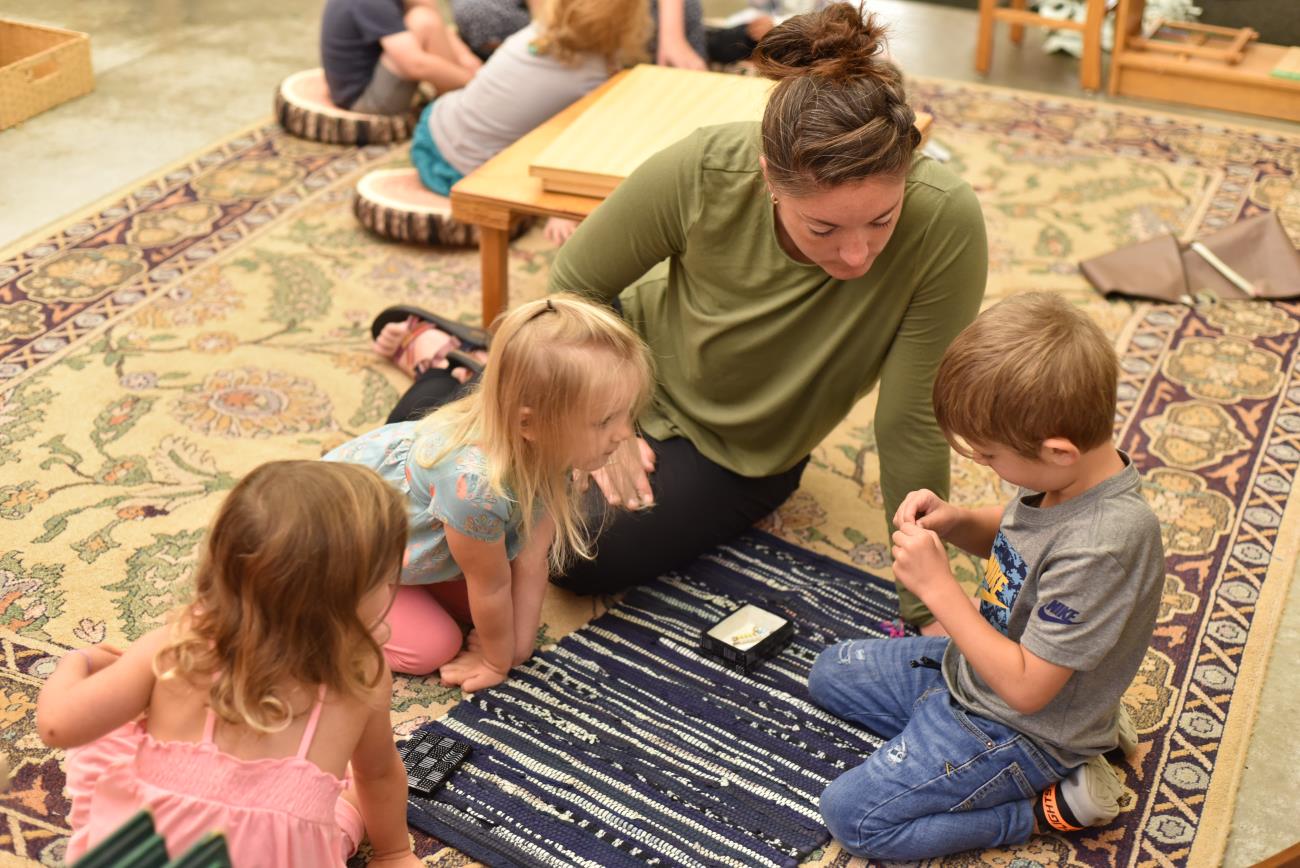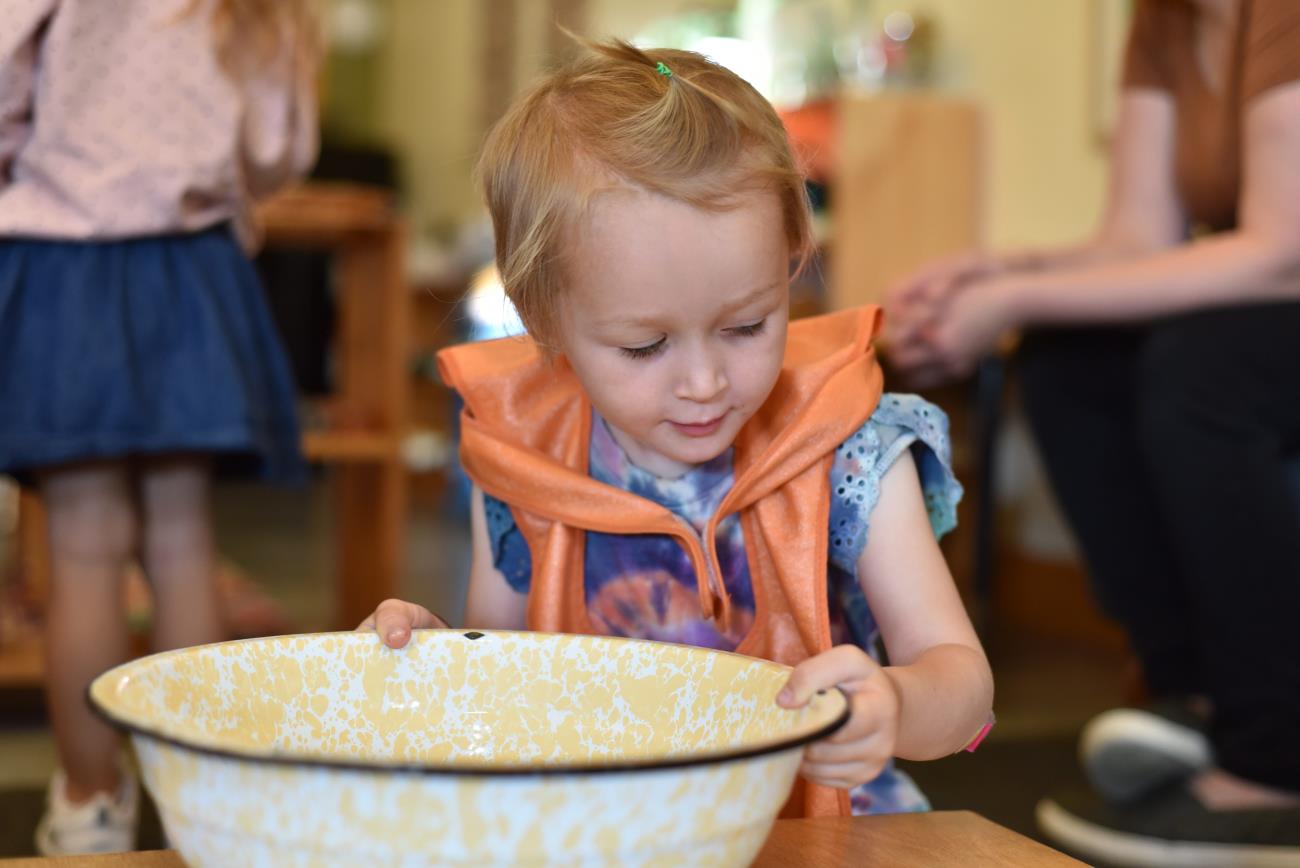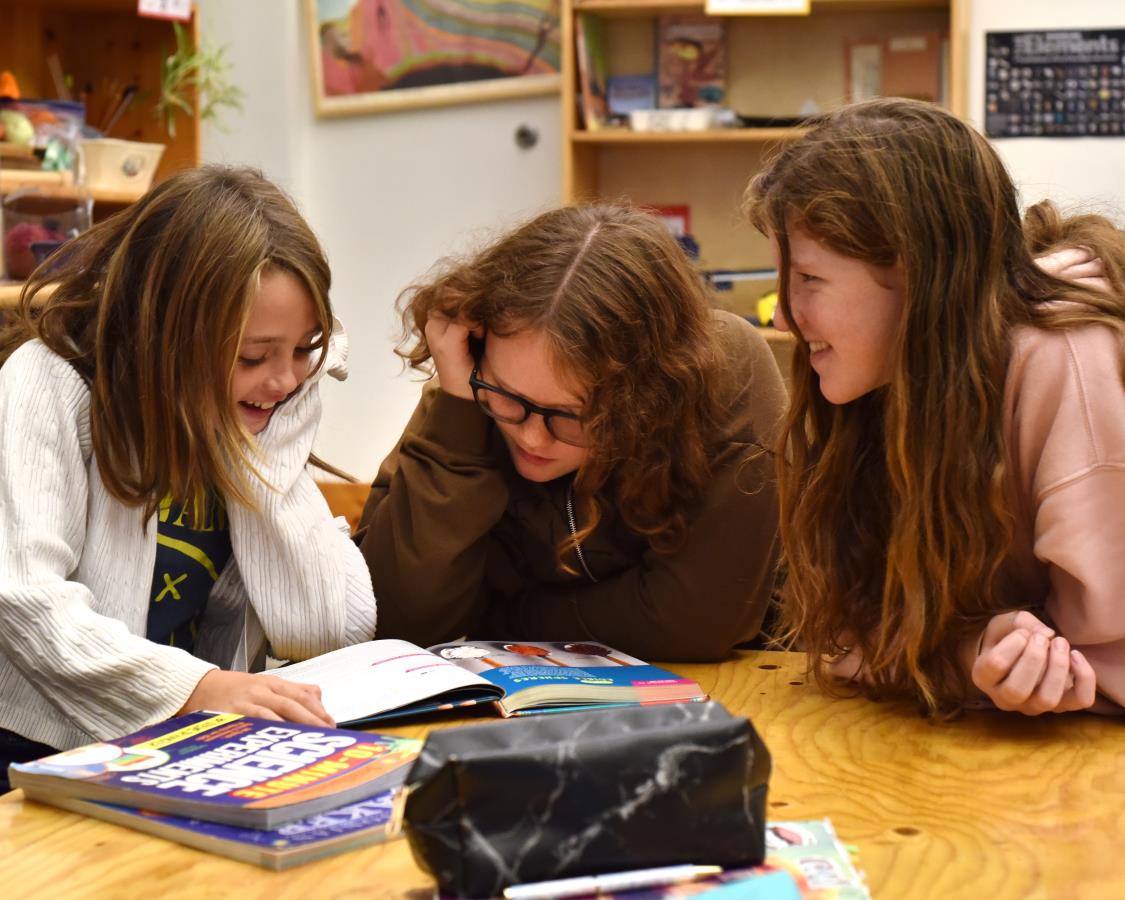Becoming a Montessori Guide at any age-group level is a rather significant undertaking in one’s life. Prior to working at the Children’s House, I was a professional athlete. I was fortunate in that my dedication, work ethic, and accountability as a teammate took me all over the world. I am speaking honestly when I share that training to become a Montessori Guide was the hardest thing I have ever done. It is also my greatest accomplishment.
By the time I graduated from Montessori Training Center Northeast, I had spent two summers writing 1,119 pages to create my own Primary lesson albums. Guides call on these albums frequently as each material has a precise set-up, introduction, carefully analyzed movements, and restoration of materials used. Following a lesson, the guide relies on observations of the child for an opportunity to gain insight into where they might lead the child next.
Some people enter into training with little to no experience in a Montessori classroom. Others, like myself, come with years of experience as an assistant. Regardless of the experience prior to training, there is nothing that prepares a person for the transformation they will undergo. Children are forever seen through a different lens.
Take a moment to imagine the following:
You walk into a room. There are many children. One child is in the middle of the classroom. They are wearing a purple apron. They have a chair next to them holding their tray of similarly colored materials; a basin of water, a sponge, a bar of soap and a brush. Water and soap is on the table, on the child, on the floor and maybe beginning to flood underneath the table of the next child over. Water continues to drip over the side of the table and soap flies as the child feverishly makes a circular motion with their arm. The basin has plenty of water in it, but the child keeps adding to it. You notice the towel hanging on the back of the chair and are itching for the child to use it. Next, the child goes to empty the basin and the puddle under the table is turning into Lake Michigan.
Now as you’re imagining this, your instincts are probably asking you: why didn’t someone stop this child? How on earth would the adults in the room allow a child to make this mess? Who is going to clean that up? What if someone slips on all of the water? Is no one really seeing this? Has this child even had the lesson?
Don’t worry! These are all typical reactions from adults. Especially when we watch children take part in a task that we know exactly how to do. Montessorians often recall their trainer sharing to “sit on their hands,” for that very reason. At times we can be in a rush to step in and help a child. However, sometimes it’s also important to ponder, is the child really asking for or needing my help? We have a few guiding principles in the classroom that assist us in making the decision to step in or not. We intervene when a material is being misused in a way that is not purposeful, and when a material or child is at risk of harm. If misuse or harm is not occurring, then our work is to observe.
As adults, we have gotten to experience water in the way it moves, absorbs, washes, tastes, feels, etc. Children on the other hand are just at the very beginning of exploring all of these qualities in water. More significantly, children are experiencing characteristics and qualities in the entirety of the world around them. To call an alarm to the puddle of water on the floor could have been stripping the child to whatever path of discovery they were on. The puddle being tidied is not more important than the focused child creating themselves through activity.
Becoming a Montessori Guide showed me how to find joy in the messes created. I have gained a much greater appreciation for all the work a child does in creating themselves. After all, children are born dependent on adults to guide the way. I am amazed at how very quickly their dependency begins to shift with each passing day, each skill acquired and the words they are eager to share, “I want to do it!”
“Before such attention and concentration have been attained, the teacher must learn to control herself so that the child’s spirit shall be free to expand and show its powers; the essence of her duty is not to interrupt the child in his efforts. This is a moment in which the delicacy of the teacher’s moral sensitiveness, acquired during her training, comes into play. She must learn that it is not easy to help, nor even, perhaps, to stand still and watch. Even when helping and serving the children, she must not cease to observe them, because the birth of concentration in a child is as delicate a phenomenon as watching with the aim of making her presence felt, or of helping the weaker ones by her own strength. She observes in order to recognize the child who has attained the power to concentrate and to admire the glorious rebirth of his spirit.”
-Dr. Maria Montessori, ‘The Absorbent Mind, Clio Press, Pg. 248
As Montessori teachers, we are trained to anchor our service to the child in the foundational principle that education should be an “aid to life.” To achieve this lofty, yet practical goal, we strive to foster the development of lifelong learners through the joyful discovery of specific skills and concepts, the wonders of the expanding world around them, and what matters to them and what type of person they want to be.
Whether you observe a Nido or Junior High classroom or any Montessori classroom in between, you see an environment carefully designed to optimize the development of critical skills and the acquisition of key concepts. Dr. Montessori’s observation of children in action confirmed that they are in the process of self-construction. Infants need the freedom to move and explore in order to strengthen their gross motor skills and discover the immediate world around them. Young children continue this discovery, building their physical, emotional, and cognitive skills, as they walk down the hallway to the gym, combine ingredients to make muffins, or sing songs with friends. The Primary environments allow children to continue this development of skills that aid in their everyday life. You can’t learn how to tie your shoes, zip your coat, or clean up after yourself if you don’t get to discover how to do so. These practical skills continue to be encouraged in Elementary and Junior High. Keeping track of a home folder, making your lunch, completing your classroom job, navigating the highs and lows of friendships - only by doing can you discover your strengths and areas of challenge. Yes, not all of these discoveries come about joyfully. However, once the skill has been mastered or the concept grasped, joy is clearly a by-product of this hard work. The smile that appears at the end of the thousand chain says it all!
In addition to the environment, Montessori materials foster a joyful learning experience and discovery of the vast possibility the world has to offer. The concrete materials of Nido exist, too, in Junior High. The infant and the adolescent have hands-on experiences every day. These concrete materials span the developmental stages and create a bridge of discovery. For example, the trinomial cube of Primary that allows the child to build sensory and spatial skills in a puzzle-like manner, later allows Elementary children to hold the cube of the sum (a + b + c) in their hands and, from that, derive the formula. These concrete materials allow for the discovery of concepts and the development of an abstract understanding. Using all the senses strengthens neural pathways and makes learning more enjoyable. Ask your elementary child if they enjoy the grammar command cards and you’re sure to elicit a smile.
As the children grow, their environments expand, thus allowing for further discovery. The Primary child ventures outside the classroom to plant seeds in the raised beds, care for them, and watch them grow. The elementary child plans an outing into the local community or interviews a specialist to expand and deepen the learning that started with research in the classroom. The adolescent learner travels to historic sites to make “real” the events that occurred and the lessons learned.
Even the way we are trained to give lessons allows for discovery. The Primary guide silently completes a sequence of skills while the attentive child observes. The child then models these actions, internalizing the lesson and constructing themselves. In Elementary, we use concrete materials to support the children’s discovery of patterns and to allow them to experience those lasting “ah ha” moments of learning. Their faces light up when they see the pattern created by multiplying or dividing fractions or when they can physically see the Pythagorean theorem by manipulating the metal insets. As guides, we do not give all the answers. We wonder along with them. We plant seeds of inquiry through our Great Stories of the Creation of the Universe, the Coming of Life, the Coming of Humans, Communication through Signs, and the Story of Numbers. These stories are intended to spark curiosity and encourage the children to enthusiastically pursue their interests.
It is through all these methods of discovery and real-life experience that the children construct themselves and begin to discern what matters to them and what kind of person they’d like to be. Mistakes will be made in all areas of learning. As previously stated, this process may not always appear joyful to the observer or feel joyful to the participant, but an “aid to life" would not be helpful if it posited that existence is easy, rosy, and perfect. The ultimate goal is to support the child’s development into becoming a lifelong learner, so when joy is not part of the equation, they can use their skills and intellect to find those parts of being human that bring them joy more often than not.
Lifelong learning through joyful discovery. What a gift and valiant pursuit for all of us to embrace and support. Thank you, Dr. Montessori, for providing a framework from which we can all continue to grow and discover.


